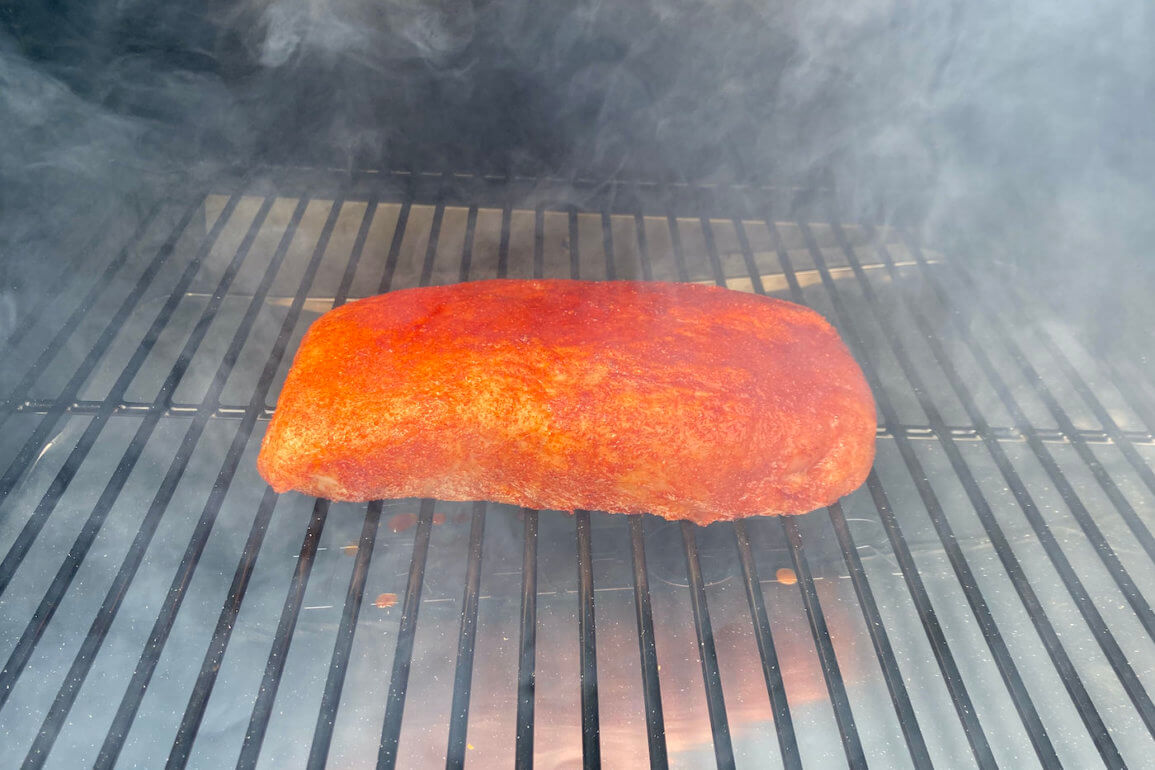The Traeger Pro 575 Pellet Grill is one of the most popular pellet grills in America. It’s large enough for most families, and it’s the most affordable full-featured pellet grill in Traeger’s lineup. If you’re looking for a larger grill, the Traeger Pro 780 has all the same components — it’s just bigger.
To get us a closer look, Traeger shipped Man Makes Fire a 575 Pro review unit. After 11 months of testing, this is what we learned:
Traeger Pro 575 Review
I wanted to get a serious amount of time in with the Traeger before I wrote this review. Why? So many people claim that a Traeger pellet grill is amazing and that you should just get one. But that didn’t really sway me before. I needed to know this: Would a Traeger end up being better than my trusty Weber propane grill? I wanted to take my Traeger journey far beyond the honeymoon phase so I could answer more complicated questions about Traeger effects than just tell you how to assemble a Traeger and how it works. I wanted to know if a Traeger would have the power to change my life — or at least nudge my backyard cooking in a positive direction.
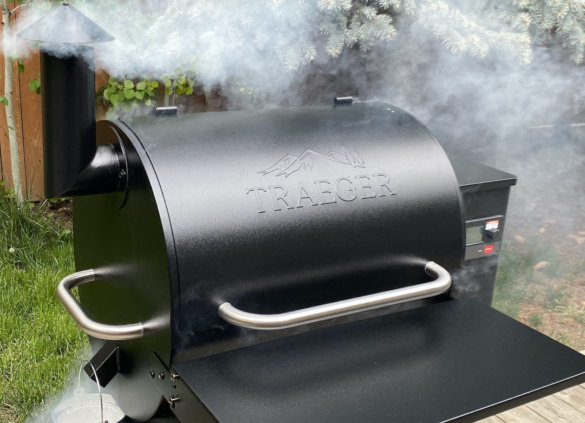
So, is a Traeger worth it? Will a Traeger be right for you?
Like I said, I have a great Weber gas grill on my deck sitting next to the Traeger — so I could choose which grill to use at any time over the last 11 months. I wanted to know if I would continue to use both grills or gravitate toward one over the other? Would I become a Traeger fan or would my interest fizzle?
More importantly, I might be able to help you learn if a Traeger is right for you. What do you need to know before you buy a Traeger pellet grill? These are the key factors — including misconceptions and Traeger tips — that I learned while using and testing the Traeger 575 Pro for 11 months.
The Traeger Is Awesome! (but not in the way you think)
First, let’s get this out of the way just in case you’re very new to pellet grills. Pellet grills cook by burning small wood pellets. You load a bag of pellets into a side hopper box that feeds the pellets into a little firepot underneath the cooking surface. The pellets produce smoke when they burn, so your “grill” is also a “smoker.”
Sort of.
The Traeger 575 Pro, in its normal settings, smokes your food, but I would say that, in general, the smoke flavor it leaves behind is relatively mild compared to true “smokers.” At first, I was disappointed because I was expecting a very powerful smoky smoke taste. In fact, I was worried that kids and some adults wouldn’t like most of the meat I would cook on the Traeger because it would be too smoky.
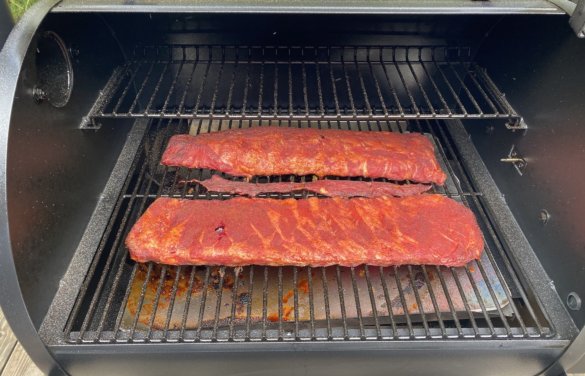
As it turns out, the smoky taste is generally more mild than what you can more easily get out of old-school wood-chip style smokers. The trouble with many other smokers, though, is that you have to baby sit them and pay far more attention to the cooking process to get those results — which is something I wanted to avoid.
This is not to say you can’t get decent smoky flavor out of your Traeger 575 Pro — you just have to plan ahead and smoke at the grill’s lowest 165-degree setting before you (likely) raise the temp to complete your cook.
Because other styles of smokers are more difficult to use, I tended to not use them very often — even when they sat on my deck ready to use. Too much of a pain to get going and keep going properly. While that’s not always true — and you can get good results from many kinds of grills and smokers — that was the cooking rut I was stuck in. And that is part of the point of this review: You can smoke salmon near an open fire or make mouth-watering steaks over charcoal in a big bowl or cut-up steel barrel. But most of us don’t smoke anything because it requires more time and planning than we have. (And we’re in a rut.)
I wanted something fairly simple, fairly easy, and very effective. What the Traeger does is combine the benefits of a traditional grill with the benefits of a smoker.
What you really get with a Traeger is a smoky oven, and that, it turns out, is awesome — I just didn’t know it 11 months ago.
‘Smoky Oven’ Cooking
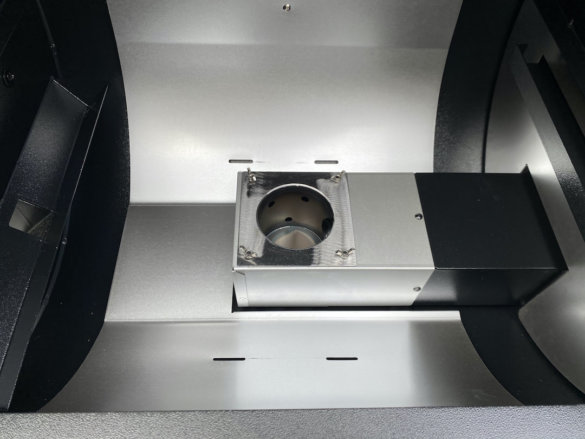
I’m not a culinary expert, but what happens when you cook on the Traeger is that you learn that you’re essentially baking food with smoke and fire. And this heating method — smoky fire created from wood pellets — delivers consistently fantastic results for all sorts of meats and vegetables.
Better yet, it’s also easy. For instance, I now prefer to cook hamburgers on the Traeger instead of on my Weber grill, which I never would have expected.
I have more room for error with burgers on the Traeger. I don’t have to babysit the burgers and they turn out great — juicy and cooked to the temperatures I’m looking for. And I don’t even have to flip them! This is especially cool when it comes to cooking lean burgers, and in particular, cooking wild game elk burgers.
What this means is that you don’t have to give up great hamburgers if you get a Traeger. In fact, your burgers might even get better. Which brings up another point: There are a lot of pellet grill tutorials available these days on YouTube, and there’s even a MasterClass on how to smoke meat with a pellet smoker!
Smoked Ribs, Tri-Tip, Brisket, Chicken, Pork Loins, and Halibut, Oh My
The best thing about a Traeger is the broad range of foods you can smoke/grill with it. More importantly, you can easily find thousands of Traeger Recipes — as well as thousands of generic pellet grill recipes — online. Traeger has a handy app full of recipes (and grill controls) for your phone, but you can also just Google whatever you want to cook and you’ll find lots of options.
What if you want to cook ribs but you don’t have 6+ hours? No problem. You can find a recipe and technique to smoke ribs in a few hours — but you can also go with an all-day recipe. Sure, you might not compete with serious barbecue masters who use more traditional wood-fired methods in massive smokers they pull behind their trucks . . . but almost nobody has that kind of time and space to work with anyway.
What you will learn is that you’ll be able to cook more kinds of meat than you would have imagined on a Traeger — and it’ll all taste fantastic.
My favorite go-to meat on the Traeger is a tri-tip roast. Why? It’s relatively affordable, produces excellent results, and it looks great when you pull it off the Traeger, let it rest, then slice it up. Everybody loves a Tri-Tip and it’s hard to get it wrong on a Traeger.
Compare Traeger grill sizes and features with Traeger’s grill comparison page!
I like cooking chicken on the Traeger, too. In fact, I don’t think I’ve ever overcooked chicken on the Traeger. On a gas grill? I used to overcook chicken on gas grills all the time. Sure, I’ll admit it, a lot of that was user error and I did get better at chicken on my Weber, particularly when I added in some indirect cooking for those massive Costco chicken breasts.
But here’s the deal: By cooking with pellets, I had to think through how I wanted to cook. By paying just a bit more attention — not a lot — I became a much better cook. That was a big win. A little more attention and planning led to far better results. In some ways, I believe that the ease of a gas grill stunts your growth as a back deck cook. To be fair, this is more of a problem with people and our busy lives than it is with a gas grill. But human nature is what it is, and for me, it means that I ended up cooking smarter on a Traeger — and I had more fun doing it.
Why is chicken better on the Traeger?
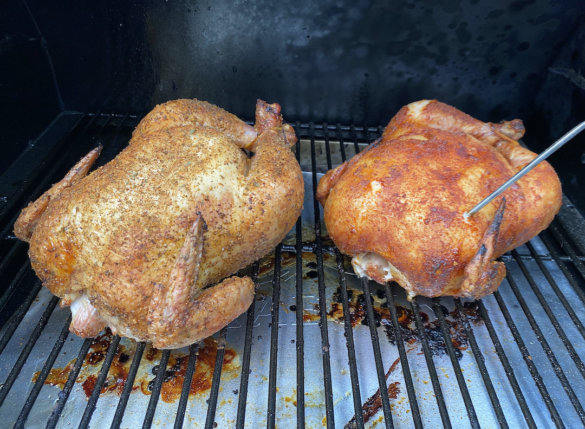
The wood combustion and smoke is a big part of it, but the mostly indirect heating helps, too. Like I said before, you’re essentially cooking in a smoky oven, which changes the whole game. You’re not dealing with hot spots or flareups.
In addition, the Traeger 575 Pro comes with a temperature probe. This probe gives you a constant readout on the LCD screen — or you can see it on your phone with the Traeger app if you connect the 575 Pro to WiFi. (To be fair, you can also buy separate WiFi-enabled temperature probes to use with most any grill.)
In my experience, because you have generally longer cook times, you will pay more attention to recipes before you start cooking. Once you’re cooking, you’ll follow the process and also pay more attention to the internal temperature of your meat. I’m not saying that you can’t do this with other temperature probes and systems on all sorts of other grills — just that the Traeger could become the catalyst that helps you take that step.
What’s different about the Traeger? Frankly, for me, it meant that I was far more invested in the process and the outcome — and that made me a better cook.
Plus, cooking on the Traeger is just fun.
Traeger Answers: ’20 Reasons Why You Haven’t Bought a Traeger Grill Yet’
How to Use the Traeger 575 Pro: The Basics
Even though the Traeger burns wood, the components and controls are electric, so you’ll need to be able to plug it in.
In order to start cooking, you need to go through a startup process that takes about 15 minutes — basically the Traeger ignites a few pellets in the firepot and heats the grill. It’s not instant. I thought this would be annoying, but it’s not because it just means that you fire up the Traeger first then get things ready to cook. (Besides, if you’re using a gas grill correctly, you preheat it as well.)
When you start, you set your desired cooking temperature. The Traeger heats to that temperature and maintains that temperature for hours and hours — and you can change that temperature via the LCD panel or via the Traeger smartphone app.
However, the temperature does vary while you cook. You can set the temperature in 5-degree increments. Nearly all the time, the Traeger stays within a few degrees of your set temperature — but it can sometimes shift 10 degrees or so. This is not a big deal. Remember, you’re cooking with burning wood which puts out inconsistent heat over time. There are going to be some variations due to the combustion process — and maybe even due to changes in weather and wind while you’re cooking.
Don’t worry about it.
I worried about the exact temperature at first and I was stupid. You will have to be an outstandingly awesome BBQ master to have the small swings in temperature affect your results enough to notice.
What I realized is that real fire is imprecise but awesome anyway. In fact, when I see the temp rise above my set temperature a few degrees, I like it because I know there’s a real fire burning in there.
Compare Traeger grill features on Traeger’s grill comparison page!
Don’t Run Out of Pellets!
I once ran out of pellets in the hopper while cooking elk burgers for a group of people. That was a big mistake. Here is what happens when you run out of pellets. First, the Traeger slowly loses temperature and doesn’t rise back up like it should because there are no pellets moving from the hopper to the firepot. That means that the auger, which moves the pellets from the hopper to the firepot in a tube, is also empty.
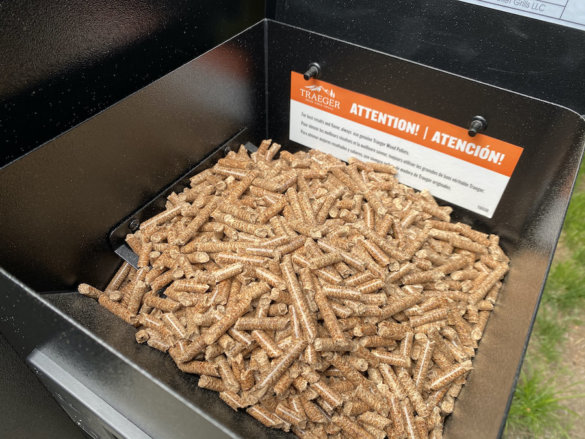
You might think that you can simply add more pellets to the hopper and that everything will be fine. Not so. Why? The auger very slowly moves pellets from the hopper to the firepot . . . and this takes time because the entire auger path is out of pellets. So you might need to prime the auger (which you’ll do once when you start the Traeger for the first time). Unfortunately, you can’t prime the auger manually when you have a hot grill with elk burgers on it.
To get to the prime process, you need to shut down the Traeger. For safety purposes, the Traeger has a shutdown cycle that lasts 15-20 minutes depending on the temperatures. You’ll probably panic like I did and just pull the plug on the Traeger. And then try to get the Traeger running again, except it doesn’t start up as quickly as it should because there are no pellets in the firepot!
By the time you get the fire burning again, your food will have had a chance to cool.
Of course, Traeger has a web page that tells you what to do if you run out of pellets that’s a bit more efficient than what I did . . . but take it from me, the easiest way to deal with this is to never let it happen in the first place. Now, every time I start up the Traeger, I take a peek at the level of pellets. Habit created, problem solved.
Incidentally, Traeger sells a Traeger Pellet Sensor accessory that you can mount in your hopper. It’ll alert you through the Traeger app on your phone if the pellet level gets low.
How to Clean a Traeger
Keeping your Traeger clean is easier than I was expecting. Occasionally you’ll need to open it up to get to the firepot so that you can vacuum out any buildup of ash.
In addition, Traeger sells some thick aluminum foil sheets that fit below the grill on top of the Traeger 575 Pro’s drip tray. Once you get a build up of blackened grease, you just remove the foil. If you don’t want to pay for these fitted sheets, you can use some standard aluminum foil and just overlap it like roof shingles so the grease flows downhill on top of the foil.
Your Traeger includes a grease bucket that catches excess grease and helps keep cleaning easy. Traeger sells aluminum inserts that fit into this grease bucket. They also make clean up simpler.
How Much Does It Cost to Operate a Traeger?
If you’re coming from the propane gas grill world, you’ll likely spend more on pellets than you spend on propane. I would guess that you’ll spend roughly twice as much on pellets as you do on propane . . . but this will be very hard to calculate because you’ll likely be cooking on your Traeger more frequently than you were cooking on your gas grill.
Traeger, of course, recommends that you only use Traeger brand pellets, but some people use cheaper high-quality pellets anyway.
Traeger pellets are widely available in the stores near me, so I haven’t found a reason to deviate. What I can tell you is this: don’t worry about which flavor or variety of Traeger pellets you get. I’m sure some experts can boost their results by using the optimal hardwood on a Traeger, but I have not been able to tell much of a difference between the different pellet blends. Experts might be able to notice that a rib is 5% better, but once I’m eating a great rib, I’m focused on enjoying the moment, not wondering if cherry or pecan would have been better.
I’m pretty much down to only bothering to run the Traeger Signature Blend pellets. The hickory-maple-cherry blend works well with everything I’ve cooked so far and it simplifies everything. But that’s just me.
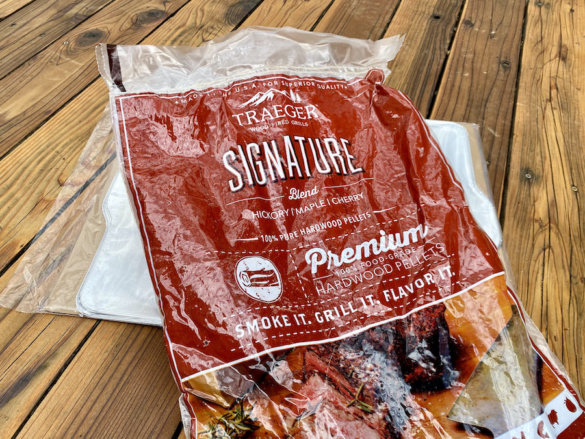
If you want to overthink it — or aim for finely tuned optimization — you can. I don’t want to dissuade you from experimentation and optimization. After 11 months, I’ve settled on a basic pellet blend while I’ve increased focus on seasoning and food prep.
As for rubs, there are many great rubs available all over the place, but if you need a no-risk place to start, try the Traeger Rubs & Seasonings. I’m a big fan of the can’t-go-wrong Traeger Pork & Poultry Rub and the surprisingly good do-everything Traeger Rub.
Excellent Build Quality
The build quality of the Traeger Pro series is excellent. They’re made of steel and they’re quite burly. You will be pleased. Traeger has a 3-year warranty on the grill in the USA. I expect that it’ll last far longer than three years, partially because it has a rugged brushless DC motor.
Traeger Model Choices
The only difference between the Traeger Pro 575 and Traeger Pro 780 is the grilling surface area. With the 575 you get 575 inches of cooking space while you get 780 inches of cooking space with the Pro 780. It’s that simple.

Should you step up to the Pro 780? If you’re sure that you’re going to want to cook for bigger groups or start cooking more complicated meals on the Traeger, you’ll appreciate the extra space on the Pro 780.
What about the Traeger Ironwood and Timberline Series? What do you get with the more expensive Traeger Ironwood and Timberline Series?
With the Ironwood and Timberline grills you’ll get double-wall insulated interiors. This extra insulation will help you maintain more consistent temperatures, particularly during the winter. You’ll also get more sophisticated heat and smoke management through the Traeger TRU Convection System and Traeger Downdraft Exhaust System.
If you have the budget, by all means, splurge on the Timberline or Ironwood grills. If you can’t see that level of investment, don’t obsess about it — you’re still going to get a fantastic experience with the Pro 575 or 780. Plus, you still get the DC Brushless Motor for your pellet auger. This is cool because it’s a very long-lasting motor, and it’s driven by the same electronic brains.
For a smaller option, consider the Traeger Tailgater Pellet Grill. The upside is that this Traeger is mostly large enough to live on your patio or deck, but it’s still relatively portable. Before Traeger sent over the Pro 575 review unit, I was seriously considering buying the Traeger Tailgater. I believed I would get most of the benefits of a larger Traeger . . . without the larger investment costs. And, of course, I’d still have my trusty Weber gas grill in case I didn’t appreciate the Traeger.
That pairing is still a valid option if you’re not sure about pellet grills. For me, right now after 11 months of testing, I’m sure. If I could take my present Traeger pellet grill knowledge and rewind three years, I would not have purchased my Weber gas grill at all — I would have bought a Traeger pellet grill, no doubt about it. If I felt that I might have needed a gas grilling option — say for a power outage or to cook up some kid hotdogs — I would have went with a small grill like the portable Weber Q1200 or a camping-style grill/stove system.
Compare Traeger grill features on Traeger’s grill comparison page!
Traeger vs Weber Gas Grill?
Here’s the deal: I very much like my Weber gas grill. It is leaps and bounds better than cheaper gas grills I’ve used and suffered with for years. It heats evenly and it’s built well with an excellent warranty. Nowadays, though, I only use it when speed is very important. That means I tend to use it for hot dogs and sausages. I feel like I now neglect my Weber grill.
If I have a high-quality steak, I’ll sometimes use the Weber because it’s hard to mess up a high-quality steak. On the other hand, if I have a bit more time, I still prefer the wood-burning taste and experience of cooking on the Traeger.
Traeger Pro Tip: ‘How to Reverse Sear Steak’
Any Traeger Cons?
Once you understand what’s going on with your food on a pellet grill, there aren’t any real cons. For simple grilling — like hotdogs for the kids — a Traeger takes longer than a gas grill.
The Traeger is electric, so you will need to be able to plug it in. That might affect where you place your Traeger.
The WiFi is limited to the 2.4 GHz band, and that means that your 5 GHz WiFi router will also need to broadcast at 2.4 GHz. Many routers come out of the box set up like this, but it’s possible that you’ll need to mess with your WiFi router settings. In addition, if your phone is connected to your 5 GHz band, you might have to futz around longer to get the Traeger WiFIRE system working with your phone. Why does Traeger use 2.4 GHz when 5 GHz is usually faster? A 2.4 GHz signal travels better through walls — and your Traeger will be outside of your walls.
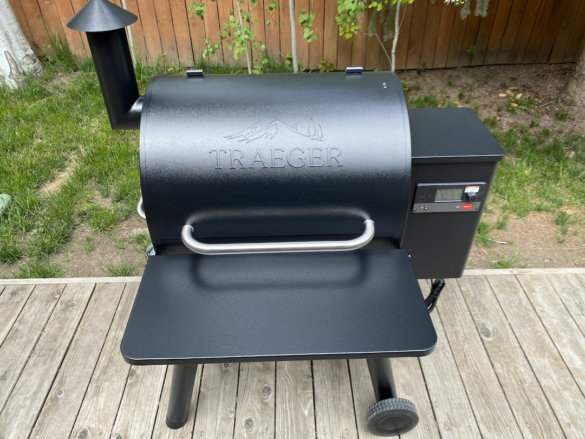
The biggest con/annoyance with the Traeger Pro Series is that they don’t come with a shelf. You’ll have to buy the shelf as an add-on accessory. If you have a small table, you can avoid this purchase, but if you don’t, you’ll want to buy the shelf. I understand that Traeger is trying to keep the initial cost of entry down, but . . . this is like selling a pickup without floor mats. You don’t technically need floor mats to drive a pickup — but you really do.
So, the Traeger cons are mild squabbles. Nothing serious.
The Verdict: Will a Traeger Make Your Life Better?
The question is, will a Traeger change your life? For me, it’s helped me become a better backyard cook — and it’s just more fun to cook on. Everyone is different, but everyone I know who has moved to a Traeger now loves their Traeger. It has changed how they cook for the better. In addition, I can almost guarantee that your family and friends will appreciate it, too. Very highly recommended.
Get the Gear:
- Traeger Pro 575
- Traeger Pro 780
- Traeger Timberline Series
- Traeger Ironwood Series
- Traeger Tailgater
- Traeger Grill Accessories

